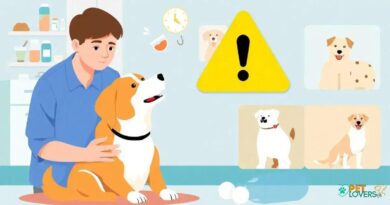What is Dog etiquette
Understanding Dog Etiquette
Dog etiquette refers to the set of unwritten rules and behaviors that dog owners and their pets should follow to ensure a harmonious coexistence in public spaces. This concept encompasses everything from how to interact with other dogs and their owners to maintaining proper control of your dog in various environments. Understanding these guidelines is essential for fostering positive relationships between dogs and people, as well as among dogs themselves.
The Importance of Socialization
Socialization is a crucial aspect of dog etiquette. It involves exposing your dog to different environments, people, and other animals in a controlled manner. Proper socialization helps your dog develop good manners and reduces the likelihood of aggressive or fearful behavior. When dogs are well-socialized, they are more likely to behave appropriately in public settings, making outings enjoyable for everyone involved.
Leash Manners
One of the fundamental aspects of dog etiquette is leash manners. When walking your dog, it is essential to keep them on a leash to ensure their safety and the safety of others. Teaching your dog to walk calmly on a leash without pulling is vital. This not only makes walks more pleasant but also prevents potential accidents or confrontations with other dogs or people. A well-behaved dog on a leash reflects positively on the owner and contributes to a more enjoyable environment for all.
Respecting Personal Space
Respecting personal space is another key element of dog etiquette. Just like humans, dogs have their own comfort zones. When meeting other dogs or people, it is important to allow them to approach at their own pace. Forcing interactions can lead to stress or aggression. Always ask for permission before petting someone else’s dog, as not all dogs are comfortable with strangers. This simple act of respect can go a long way in promoting positive interactions.
Cleaning Up After Your Dog
Cleaning up after your dog is a fundamental responsibility of dog ownership and a crucial aspect of dog etiquette. Always carry waste bags during walks and promptly clean up after your dog in public spaces. This not only keeps the environment clean but also shows consideration for others who share the space. Neglecting this responsibility can lead to negative perceptions of dog owners and contribute to stricter regulations regarding dogs in public areas.
Training and Commands
Training your dog to respond to basic commands is an essential part of dog etiquette. Commands such as “sit,” “stay,” and “come” can help you maintain control of your dog in various situations. A well-trained dog is more likely to behave appropriately around other dogs and people, reducing the risk of incidents. Investing time in training not only enhances your dog’s behavior but also strengthens the bond between you and your pet.
Understanding Dog Body Language
Understanding dog body language is crucial for practicing good dog etiquette. Dogs communicate through their body language, and being able to read these signals can help you gauge their comfort level in different situations. For example, a wagging tail does not always indicate a happy dog; it can also signify excitement or anxiety. By learning to interpret these signals, you can better manage your dog’s interactions with others and ensure a positive experience for everyone.
Meeting Other Dogs
When meeting other dogs, it is essential to approach the situation with caution and respect. Always ask the other dog’s owner for permission before allowing your dog to greet theirs. If both dogs are allowed to meet, do so in a neutral area where neither dog feels territorial. Monitor their body language closely to ensure that both dogs are comfortable. This respectful approach helps prevent misunderstandings and promotes positive interactions.
Dog-Friendly Spaces
Knowing which spaces are dog-friendly is an important aspect of dog etiquette. Many parks and public areas have specific rules regarding dogs, including leash requirements and designated off-leash zones. Familiarize yourself with these regulations to ensure that you and your dog can enjoy these spaces safely and responsibly. Adhering to the rules of dog-friendly areas not only keeps your dog safe but also contributes to the overall enjoyment of the space for all visitors.
Being a Responsible Dog Owner
Ultimately, practicing good dog etiquette boils down to being a responsible dog owner. This includes understanding your dog’s needs, providing proper training, and being considerate of others in your community. By following the principles of dog etiquette, you contribute to a positive environment for dogs and their owners alike, fostering a sense of community and mutual respect among all pet lovers.

